From the requirements identified for your product and application, we can examine materials for performance in the injection molding process. The injection molding technique for each molded part is determined by the base material you choose: polymers or metals.
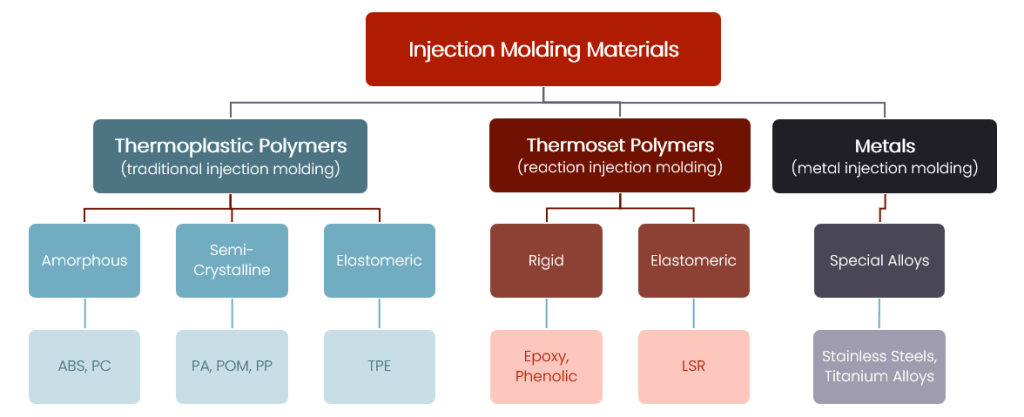
1 | Start with Base Material to Determine Molding Technique
Polymers are the most common engineering materials used for injection molded parts. They offer the broadest range of material performance options and molding processes that satisfy most product development requirements.
Metals can also be injection molded for special applications where high-volume fabrication of small parts (typically 25mm/10g up to 150mm/300g) is required for complex subassemblies.
Metal Injection Molding (MIM) is a complex and costly process, but it can be worth pursuing when a specialized material is critical to the application.
MIM Material Advantages
> Good for high volume production of small/complex parts
> Enables use of high-grade metals, like stainless and specialty alloy steel, titanium, tungsten carbides, etc.
> Finished parts are typically 98% dense with properties comparable to wrought material
MIM Material Drawbacks
> More costly than polymers
> Requires post processing for binder removal and sintering
2 | Choose a Polymer Type for Application Performance
When polymers are the most suitable base material for your injection molded product, we hoose a category that provides the chemical properties for your application requirements:
> Products designed for less demanding environmental requirements tend to benefit from thermoplastic polymers which include materials with greater cosmetic properties, recyclability, and customization through additives.
> Certain applications with specific performance needs benefit from thermoset polymers. Thermosets are reaction injection molded to create a cross-linked structure that cannot be melted and thus withstands higher temperatures and harsher chemicals.
Polymer Type
Thermoplastic Polymers
Molding Technique
Injection Molding
Application Considerations
> Used for a wide range of consumer products
> Includes materials with good cosmetic properties
> Accommodates additives to increase plasticity, tensile strength, flame resistance, color and brightening, microbial resistance, and static resistance
> Includes recyclable materials that can be re-melted easily
Thermoset Polymers
Reaction Injection Molding
> Used for products subject to harsher conditions and higher temperatures
> Frequently used in electrical applications to withstand high voltage and temperatures
> Frequently used in medical applications involving repeated chemical and autoclave disinfections
> Non-recyclable; cannot be re-melted or reshaped
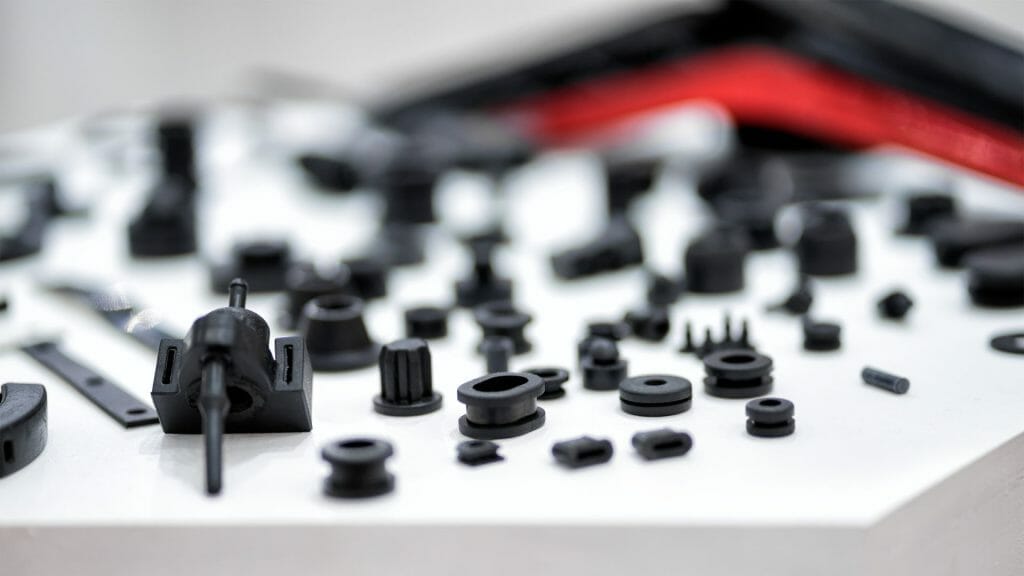
3 | Narrow Down Materials Properties to Match Part Functionality
Based on the material advantages your product requires, we can start to narrow down the selection within a material subgroup. We weigh the advantages and drawbacks of each material type to find the right solution that yields the best functional properties for each part.
Within the polymer family, thermoplastics are often preferred when they meet your functional requirements. As shown in the IAPD charts below, amorphous and semicrystalline thermoplastics are commonly compared for their material properties:
> Amorphous polymers are often used for housings where color, coating adhesion, and impact resistance are important.
> Semicrystalline polymers tend to work best for internal mechanisms where mechanical function is prioritized.
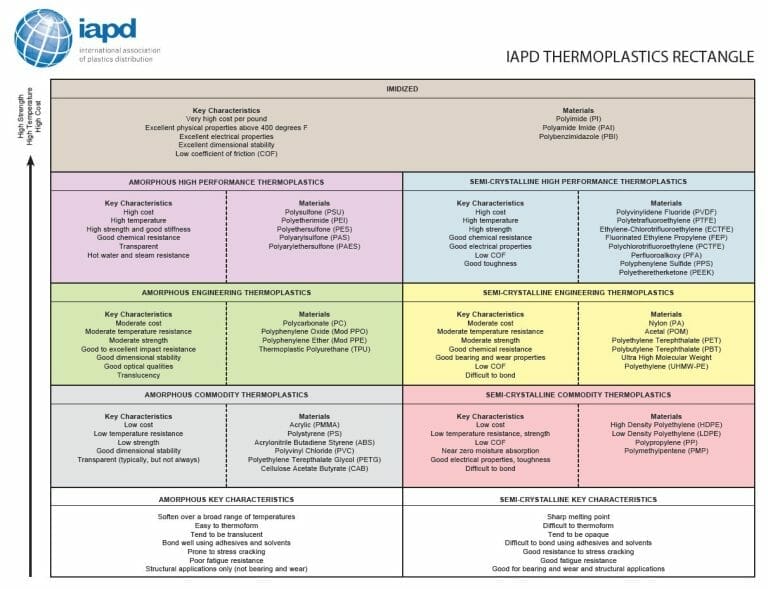
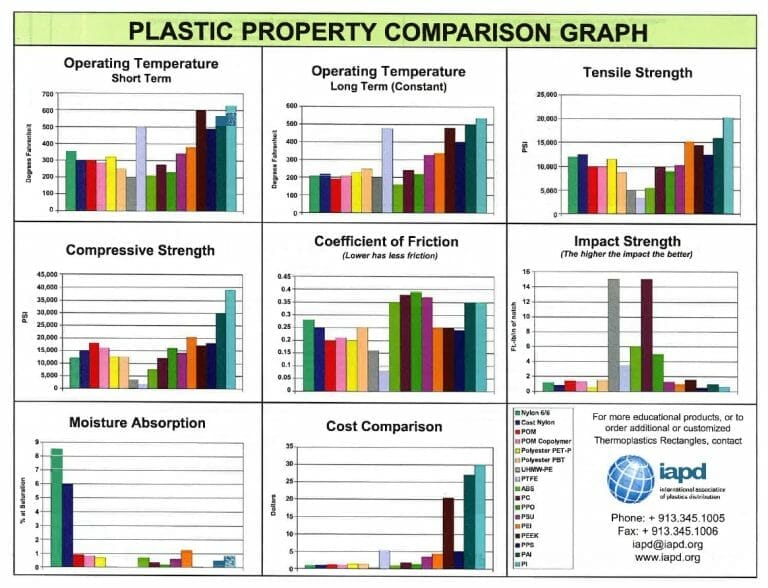
Our primary goal is to isolate your functional and aesthetic requirements so we can choose the perfect material for each part. For each material subgroup, there are many different material advantages and drawbacks:
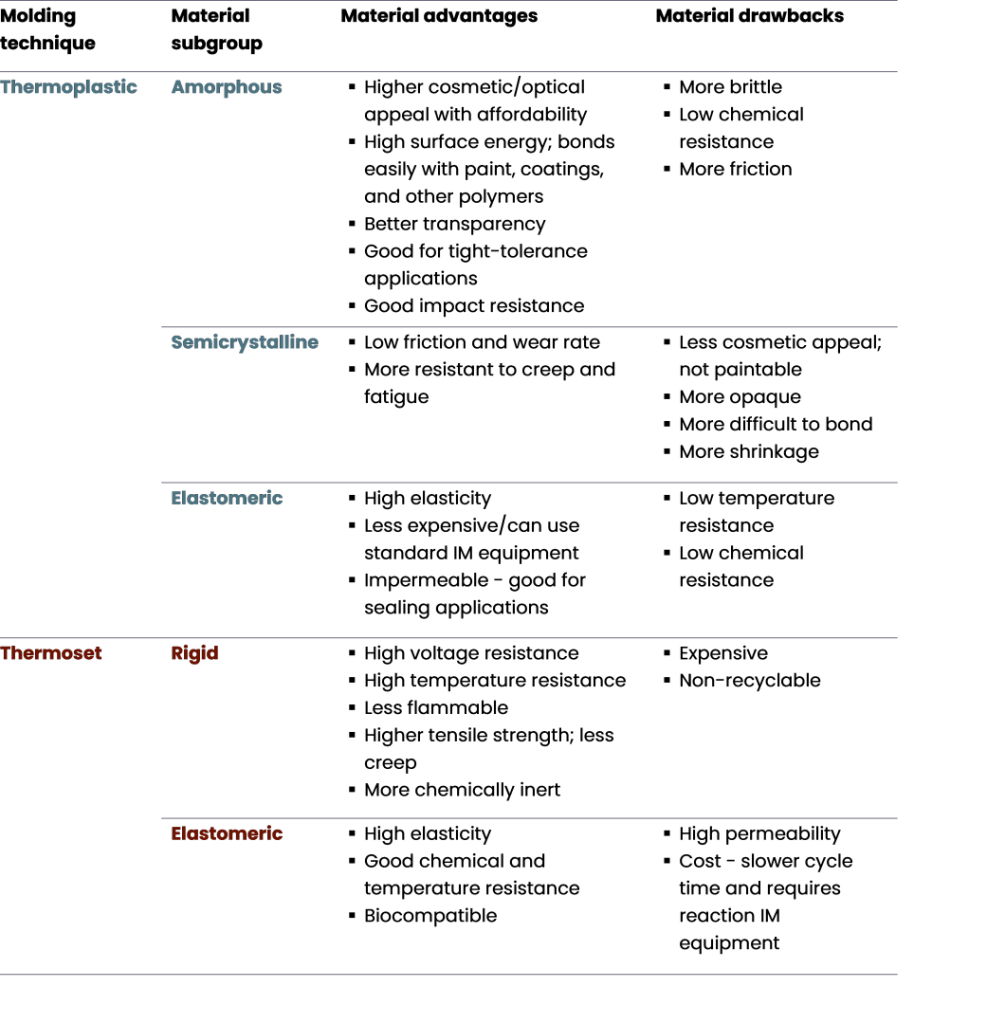
When a component has conflicting material requirements, such as requiring high aesthetic qualities and fatigue resilience, we’re able to recognize when a material property doesn’t align to its application.
For example, an amorphous polymer is the best choice for a housing component that requires specific aesthetic qualities, but it has inherently lower fatigue limits. This redirects us to employ design techniques to meet functional requirements, such as:
> Preventing fatigue fracture of attached parts by designing to a lower peak stress level
> Leveraging a two-shot molded design to ensure the right material is in the right place
> Developing a testing plan to ensure the material functions in a non-standard application

4 | Enhance Material Performance Through Additives
When using thermoplastic polymers, the performance of the materials you select can be enhanced through the use of additives to affect performance and cosmetics.
In the following example, by modifying molded acetal through the use of certain additives (A), material properties (B) like tensile strength, impact strength, and heat deflection can be improved significantly:

Working from your requirements, we identify specific additives for thermoplastic materials that are most beneficial to your products and/or parts:



